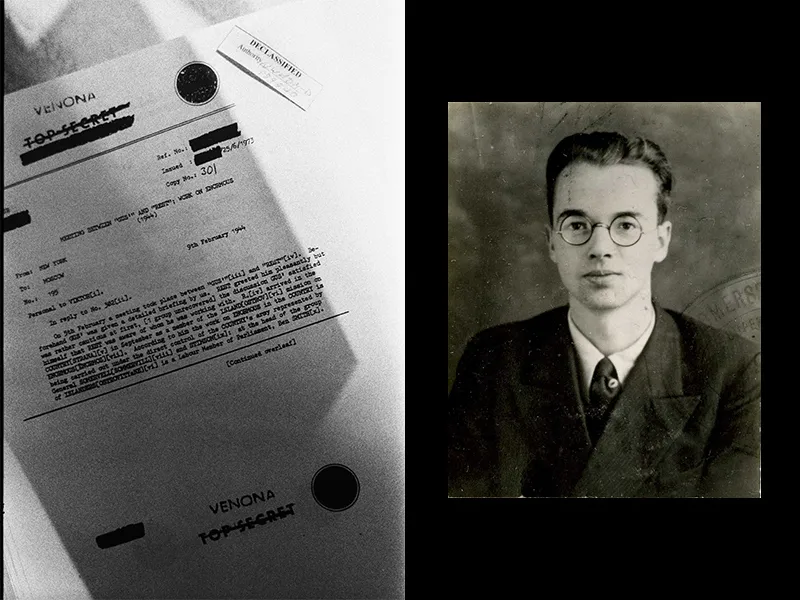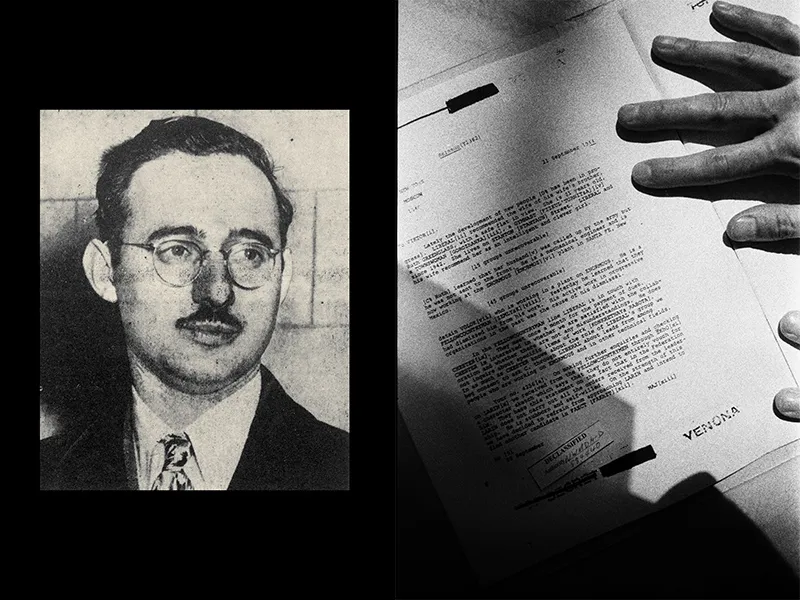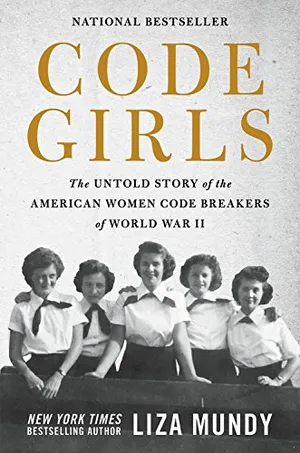The Women Code Breakers Who Unmasked Soviet Spies
At the height of the Cold War, America’s most secretive counterespionage effort set out to crack unbreakable ciphers
/https://tf-cmsv2-smithsonianmag-media.s3.amazonaws.com/filer/27/24/27247b94-9823-4e39-b759-db2bbc37d65a/sep2018_b04_venona.jpg)
Numbers came easily to Angeline Nanni. As a girl of 12 in rural Pennsylvania during the Great Depression, she kept the books in her father’s grocery store. In high school, she took all the accounting classes on offer. Enrolled in beauty school after graduation—cosmetology being one of the few fields open to women in the 1940s—Angie focused on the business side while her sisters, Mimi and Virginia, learned to style hair. Before the war, the three Nanni sisters had opened a beauty parlor in Blairsville, Pennsylvania, and Angie ran it. So yes, numbers were her calling.
But the numbers on this test were like nothing she had ever seen.
Angie—intent, graceful, unflappable—was seated in a small classroom in a large, ill-built temporary structure. The year was 1945, and World War II was over. The Nanni sisters had moved to Washington, D.C. to take jobs in the war effort, but now the beauty shop in Blairsville beckoned. Angie, though, wanted to stay. This test would determine whether she could.
It was being administered at a secret government facility in Arlington, Virginia. Around Angie were eight or nine other women, all contemplating the same set of numbers, wearing various expressions of alarm. Most, Angie thought nervously, had attended college. She had not. On a piece of paper before her were ten sets of numbers, arranged in five-digit groups. The numbers represented a coded message. Each five-digit group had a secret meaning. Below that row of 50 numbers was another row of 50, arranged in similar groups. The supervisor told them to subtract the entire bottom row from the top row, in sequence. She said something about “non-carrying.”
Angie had never heard the word “non-carrying” before, but as she looked at the streams of digits, something happened in her brain. She intuited that the digit 4, minus the digit 9, equaled 5, because you just borrowed an invisible 1 to go beside the top number. Simple! Angie Nanni raced through, stripping out the superfluous figures to get down to the heart of the message.
“I don’t know how I did it,” says Angie, who was 99 years old when we talked in March. “I just said, ‘Oh, that’s going to be easy.’” The supervisor came around and saw that she had finished before anybody else. “That’s right, Angie! That’s right!” she cried. Then she ran out of the room to tell her superiors they had a new candidate for the Russian code-breaking project.
**********
That moment—and Angie Nanni’s instinctive grasp of an unusual form of math called non-carrying addition and subtraction—changed the trajectory of her life. It also helped seal the fate of other Americans, such as Julius and Ethel Rosenberg, executed in 1953 for passing atomic secrets to the Soviet Union. Their conviction was based in part on the work of Angeline Nanni and a group of other extraordinary American women.
Their persistence and talent brought about one of the greatest counterespionage triumphs of the Cold War: Venona, the top-secret U.S. effort to break encrypted Soviet spy communications. For nearly 40 years, Angie and several dozen colleagues helped identify those who passed American and Allied secrets to the Soviet Union during and after World War II. Their work unmasked such infamous spies as the British intelligence officer Kim Philby, the British diplomat Donald Maclean, the German-born scientist Klaus Fuchs and many others. They provided vital intelligence about Soviet tradecraft. Their work was so highly classified that President Harry Truman likely did not know about it.
In 1995, when Venona was declassified, the public face of the project was male. The most celebrated name was that of a man, Meredith Gardner, a linguist who deciphered names and words, working closely with FBI agent Robert J. Lamphere. But in the cryptanalytic unit—where the tough analytic math was done, where the messages were prepared and matched, where the breakthroughs happened, where the numbers were so painstakingly stripped—the face of Venona was different: “Most of the people working on it were women,” says Robert L. Benson, a retired historian for the National Security Agency.
The story of Venona’s female code breakers has never been publicly told in full. Benson interviewed some of them for a classified internal history of Venona, only portions of which have been declassified and released online. More important, while the exploits of Gardner and other men have been the focus of entire books, the women themselves did not talk about their work—not to their friends, not to their families, hardly to each other. Most took the secret to their graves. This article is based on exclusive interviews with Nanni, the last living member of the original team of Venona women; relatives of code breakers who are no longer alive; and NSA and CIA publications that detail how the project unfolded. It marks the first time that any of the female Venona code breakers has given an interview to a reporter.
Even now, talking about her career makes Angie Nanni nervous: “I still don’t if I can help it,” she says. She and her colleagues—young women from rural towns—were privy to some of the most closely held secrets of Cold War espionage. In the 1950s and ’60s, as the Soviets attempted to learn about U.S. weapons and America was convulsed by the toxic chaos of McCarthyism, these women were among a tiny handful of Americans who knew the truth.
They were Gloria Forbes, Mildred Hayes, Carrie Berry, Jo Miller Deafenbaugh, Joan Malone Calla-han, Gene Grabeel and others. Anybody who saw the women together could easily mistake them for a suburban garden club. They wore shift dresses, big hair, fishbowl glasses. They carried handbags. They liked to picnic, shop, play bridge, bowl together. Most started out as schoolteachers. They had ferocious intellects, a powerful command of languages and math, a steely commitment to public service and an almost familial devotion to one another. Like Angie Nanni, most of them came to Washington during the war and never left.
“We were mostly single women,” Angie says. Bachelorhood kind of came with the territory: “We were afraid to meet other people because at that time, we didn’t know who we were going to meet.” It might be a Soviet plant. “I was even afraid to join a church.” Her family heritage is Italian; trim and elegant, she still has perfect posture; a cherubic face; alert, amused eyes with thin penciled eyebrows. She dresses in la bella figura tradition, with startlingly brilliant gold jewelry and bright, well-tailored clothing. She still cooks for herself; grocery shops; walks every day. And she still lives in the same downtown apartment, exotically decorated with knickknacks she picked up on travels and at antiques stores. Gesturing toward her window, in the direction of some townhouses where Soviet diplomats used to live, she conjures what Cold War Washington felt like for an unmarried woman who knew some of the government’s most sensitive secrets.
The Venona messages were encoded in a fiendishly complex system, so difficult to crack that the women mined the same trove for decades, endlessly going over code groups, digging out names, going back and back as new information came to light. At the peak of the Cold War—which was also the peak of the baby boom, an era when American women were urged to spend their lives as homemakers—it was women who started Venona. It was women who kept Venona going, and women who rolled Venona up.
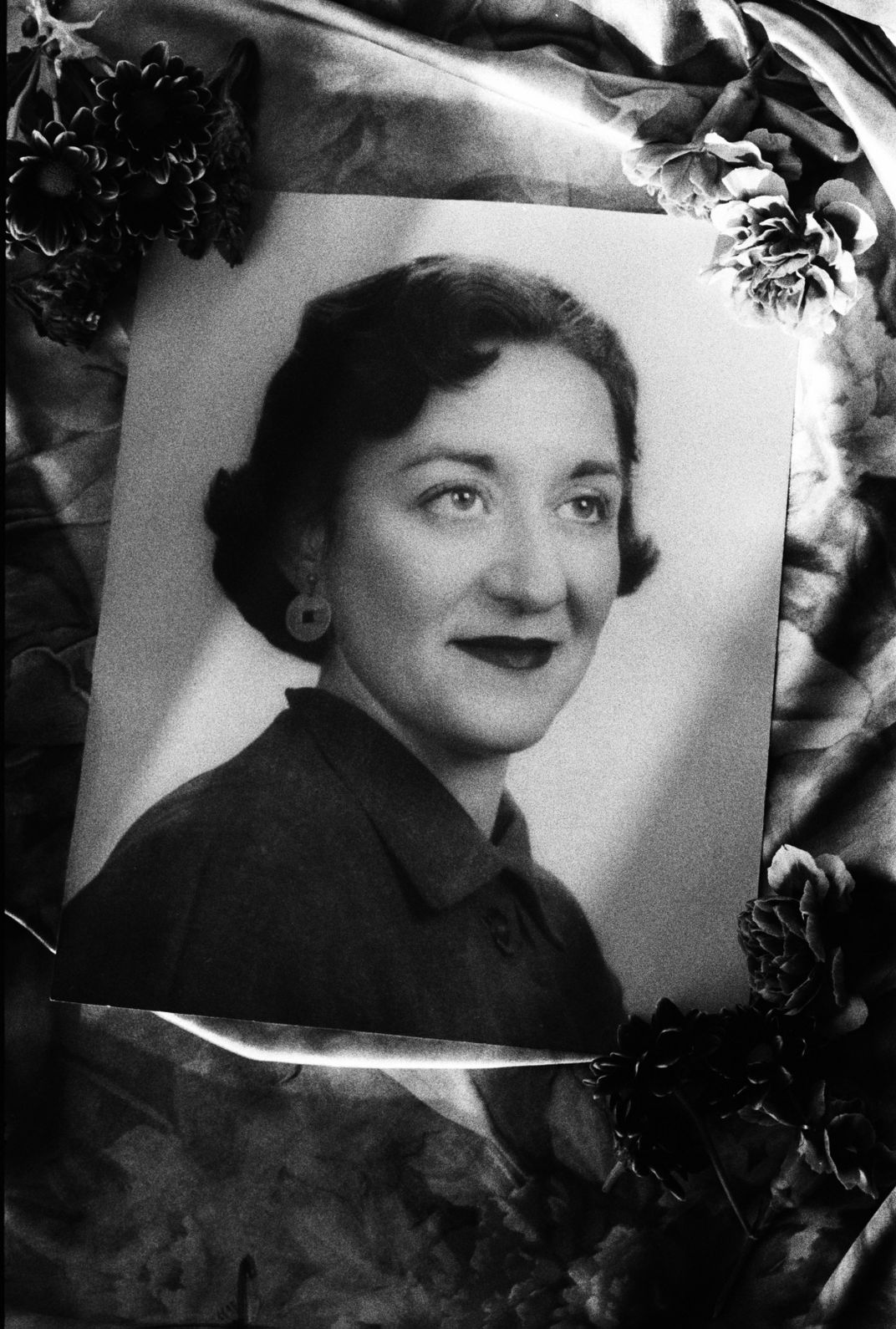
**********
To try to break wartime Soviet messages was an act of remarkable optimism, if not hubris. The Russians had a well-earned reputation for creating unbreakable codes, and U.S. code breakers already had their hands full in deciphering Japanese, German and other enemy messages. In addition, American leaders were squeamish about reading allies’ communications. But the Soviets were unpredictable, and it would be vital to know their intentions in a postwar world. So, on February 1, 1943, the Signal Intelligence Service—the Army’s code-breaking branch, and a forerunner of the NSA—quietly set up a program to break encoded telegrams sent to Moscow by Soviet diplomats stationed around the world.
The collection of intercepts had begun earlier, and somewhat by accident: Starting in 1939, Soviet communications were vacuumed up as part of a massive Allied effort to intercept transmissions sent by the Germans, Japanese and other Axis nations. When the United States abruptly entered the war on December 8, 1941, the Office of Censorship began to receive a copy of every international cable. Encoded cables were sent to the Signal Intelligence Service, which by late 1942 was up and running in Arlington Hall, a former girls’ school in Arlington, whose gracious grounds had been transformed with barbed wire and massive temporary buildings.
There, the Soviet messages accumulated in a wooden file cabinet, and then another, and another. Nobody knew what to do with them, but no crackerjack code-breaking operation throws any message away. By early 1943, the head of Army intelligence, Carter Clarke, had come to distrust the Soviets, ally or not. If they were planning to broker a separate peace with Germany, Clarke wanted to be able to warn his bosses. So he made what is, in the annals of code-breaking, a pretty common decision—to try to penetrate an ally’s secret communications. He launched a program to read Joe Stalin’s mail.
At about the same time, a bright young home economics teacher was becoming discontented with the charms of rural southwest Virginia. Gene Grabeel, 23, had grown up in Lee County. Her hometown, Rose Hill, had 300 people, a grocery, a church and a service station. Her mother raised chickens and sold eggs, and her father farmed tobacco and worked a variety of jobs. The Grabeels had a tradition of sending their girls to college. Gene went to Mars Hill, a two-year school in North Carolina, then to State Teachers College (later called Longwood) in Farmville, Virginia.
At the time, the only job a female college graduate could reliably expect was teaching school, and Gene taught home economics to teenage girls in Madison Heights, Virginia. When she told her father she hated it, he urged her to find work that made her happy. At a holiday dance in her hometown during the Christmas season in 1942, she chatted with a childhood acquaintance, Frank Rowlett, who was now a top official in the Signal Intelligence Service. Rowlett confided that there was better work in Washington.
By that time, the Army had sent a handful of officers out to seek recruits for its code-breaking operation. Since most of the men were off fighting, the recruiters focused on women. (Ninety percent of Arlington Hall code breakers would be women.) Grabeel traveled to the post office in Lynchburg to hand her application for war work to a recruiter named Paavo Carlson. He offered her a job—doing what, he could not say, because nobody had told him, either—and asked her to head for the capital as soon as she could. Grabeel’s father agreed she would be happier in Washington “shuffling paper” for six months—her likely task, they both assumed—so she took the job. On Sunday, December 28, 1942, she arrived by train and took a cab to Arlington Hall, where she was given hasty training in the art and science of breaking codes.
At Arlington Hall, most work focused on Japanese Army codes, but Grabeel, four weeks after arriving, was directed to attack the Soviet intercepts, an immensely secret and sensitive task even in that secret and sensitive place. It’s likely she was chosen because Rowlett knew her as a solid citizen with an unimpeachable family background. Her code-breaking partner was Second Lt. Leonard Zubko, a 1942 Rutgers graduate fresh out of infantry school at Fort Benning. Eager to command troops, Zubko later figured he got this desk job because he knew Russian. He did not enjoy it. He and Grabeel were seated in one corner of a room and told to speak only in whispers. The other occupant was a British liaison officer—an odd allotment of office space, as the British were not to know what was going on.
And so Venona began: two junior analysts laboring at a table in a building that was alternatively hot and cold and always crowded, with huge open bays occupied by teams working on other projects. The first thing Grabeel and Zubko did was try to get a grip on what, exactly, they had. They began sorting the tangle of messages by date as well as by “lane,” the communications circuit over which they had been sent. Before long, Zubko was replaced. Other men came and went. Grabeel stayed put.
As often happens in code-breaking, enemy countries became an odd sort of ally. Code breakers in Finland—which the Soviets invaded in 1939—had identified in Soviet messages embedded “indicators,” or special numbers that give clues to how a code system works and what kind of resources (such as code books) have been used to compile it. The Finns passed this tip to the Japanese. And since Arlington Hall was reading Japanese messages, the Finnish gleanings were passed to Grabeel.
Using these few hints, the former home ec teacher and her colleagues divined that Arlington Hall had messages passing along five different Soviet communications systems. One, the most voluminous, had to do with trade—often about materials being sent from the U.S. to Russia through the Lend-Lease program. Another carried regular diplomatic communications. In time, the code breakers discerned that the other three were spy systems: GRU, or military intelligence; naval intelligence; and the NKVD, the forerunner of the KGB.
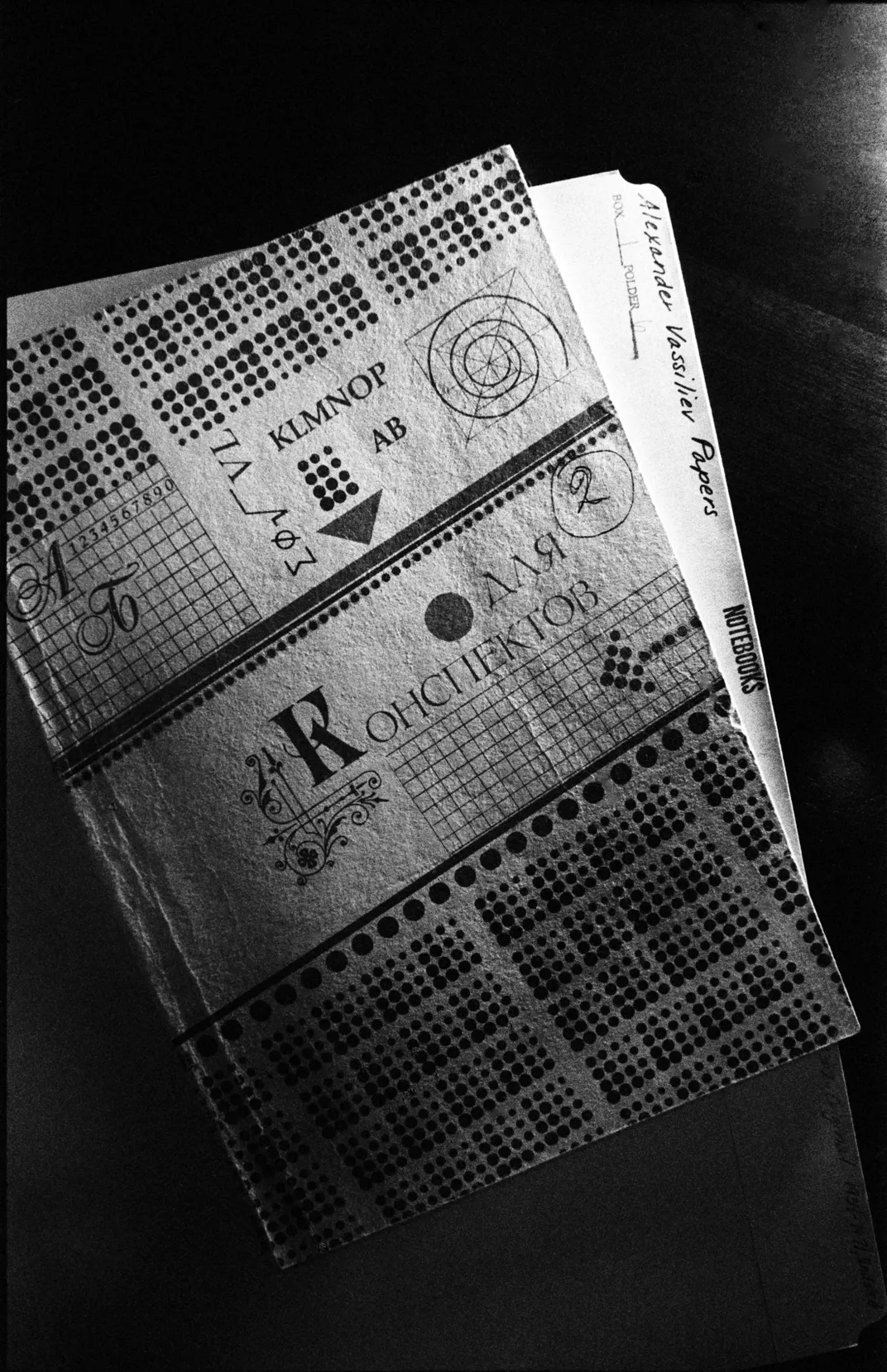
**********
The Soviets’ code system was widely considered unbreakable because it had so many layers. To encode a message, a clerk would consult a code book, a kind of dictionary that provided a four-digit code group. Each code group stood for a word or letter. To make snooping much more difficult, those numbers were converted into five-digit figures (see “How to Cipher Like a Soviet,”) and then enciphered by adding a second set of numbers, known as “key” or “additive.” (This is where the non-carrying arithmetic came in.) The Soviets drew their additives from a “one-time pad”: pads of pages, each containing about 50 random additives, each page never to be reused.
The one-time pad was believed to make the system watertight. That’s because breaking a complicated code requires “depth,” which is the term for lots of messages enciphered using the same page from an additive book. It is depth that enables code breakers to locate patterns and find a way in. With a one-time pad, there is no depth, no ability to compare.
But Arlington Hall had such huge success breaking Japanese and German codes that officials were optimistic. Over the summer of 1943, they funneled fresh recruits into the tiny Russian unit.
Josephine Miller arrived in late May. Carrie Berry and Mary Boake came in mid-July, Helen Bradley in August, Gloria Forbes in September. Virtually all were former educators. Berry later recalled that the salary was $1,800 a year, plus a bonus for Saturday work—twice what she had been making teaching school. She was an affable and opinionated Texan, adventurous and warm and outgoing—a contrast to her great friend Gene Grabeel, who was tidy and tiny and quiet and stylish (“She always looked like she stepped out of a bandbox,” her sister-in-law Eleanor Grabeel recalls), a member of the Colonial Dames of America and the Daughters of the American Revolution and, later, a devotee of University of Virginia basketball. By fall of 1943, the group also included Doris Johnson, Ruby Roland, Juanita McCutcheon and Rosa Brown. These newly fledged analysts were receiving 2,500 intercepts a week, and the number of file cabinets was increasing. A survey quoted Johnson saying that efficiency was good, “no idleness and few complaints or grievances arise.” Except that, despite all their figuring and matching, the work “has been negative in results.”
In October 1943 the code breakers began doing “machine runs” under the supervision of Mary Joe Dunning, a studious, short-haired woman who had been working for the Army code-breaking operation since the late 1930s and knew everything there was to know about how machines could simplify and hasten even the most daunting code-breaking challenge. At this early, laborious, “brute-force” stage, they used IBM punch-card machines to compare early code groups in thousands of messages that had been sent over trade channels. Thanks to this repetitive, painstaking analysis, the team began to realize that there was, in fact, a tantalizing trace of “depth”: Some pairs of messages appeared to have been enciphered using the same pad. This insight was the core achievement of Venona: The Soviets had used some of their one-time pads twice.
How could the Soviets, so expert at espionage, have committed such a basic blunder? After the Germans invaded Russia on June 22, 1941, entire factories’ worth of equipment were packed up in Moscow and put on trains to the Urals. Amid the chaos, resources became scant. In desperation, someone decided to manufacture, briefly, some duplicate sets of pads. Soviet spymasters tried to mitigate this weakness by dispersing the duplicate pads. One set might be used by the NKVD unit that was secretly operating out of New York; the second might be used by the Soviet Government Purchasing Commission in Washington. Developing the needle-in-a-haystack ability to match messages traveling through two distinct channels was crucial: If the team could determine that a certain pad used for routine trade messages had also been used by the NKVD, then a so-called “depth of two” existed, and they could begin to compare the two. To be sure, two messages wasn’t much when it came to depth: Among code-breaking experts, it had always been assumed that a depth of three—at least—was needed to break a system. But this was a uniquely gifted team.
It was Angie Nanni who did this vital matching work, looking for buried indicators to figure out which messages—traveling in different channels—might have used the same pad.
As they raced to build an understanding of the systems, other breaks were made—sometimes by men, often by women. Samuel Chew, a former English professor at the Citadel, recognized that the trade messages tended to use certain words repeatedly and in the same order, usually words having to do with the way commodities and shipment amounts were listed; this greatly helped anticipate what a code group might stand for. Marie Meyer, a Russian linguist, was particularly good at divining code-group meanings. Another big advance came when Genevieve Grotjan Feinstein, who had made a major break in a Japanese system in 1940, saw that some opening groups likely revealed which additive page had been used twice. This careful collective labor enabled the team to break the Venona messages using only their analytic powers, unaided by captured code books or supplementary material. It remains one of the greatest feats in the history of U.S. cryptology.
By now the unit had moved into an open area in the back of a temporary building, separated by wooden screens from a team reading weather-related Japanese messages. The code breakers sat in cast-off chairs at a couple of desks and wooden tables. They had a few regular typewriters and one that typed Cyrillic. At the end of the day, they unpinned their maps of the Soviet Union from the wall and locked up their Russian textbooks. Nobody else at Arlington Hall—which at its height had 8,000 workers—was to know that the Soviet code systems were being attacked.
**********
In 1945, the American intelligence establishment began to grasp the scope of Soviet spying against the United States. Igor Gouzenko, a Soviet code clerk working the GRU system, defected and told Canadian authorities that the Soviets had penetrated the Manhattan Project. Under interrogation by the FBI, Whittaker Chambers, a former GRU agent, named Americans spying for the Soviets. By November the Truman administration knew of allegations against Lauchlin Currie, a White House aide; Duncan Lee, executive assistant at the Office of Strategic Services, forerunner of the CIA; and assistant treasury secretary Harry Dexter White. Around the same time, a former Soviet agent, Elizabeth Bentley, gave the FBI a stunning 107-page statement detailing spies in the State and Treasury departments, the OSS, the Pentagon, even the White House.
The problem was that Bentley had a lot to say, but no documentation to back it up. That is where Venona came in.
By the time Angie Nanni was brought on in the fall of 1945—one of the few non-college-educated staffers—the section was in high gear. The Russian unit comprised a traffic section, two “reading” sections and a “back room,” a high-level troubleshooting section where Gene Grabeel was now one of the most experienced workers. “We all loved Gene,” says Angie, who worked in traffic. “She was very nice—very quiet....A lot of times, if we weren’t sure about something, we felt free enough to go to her.”
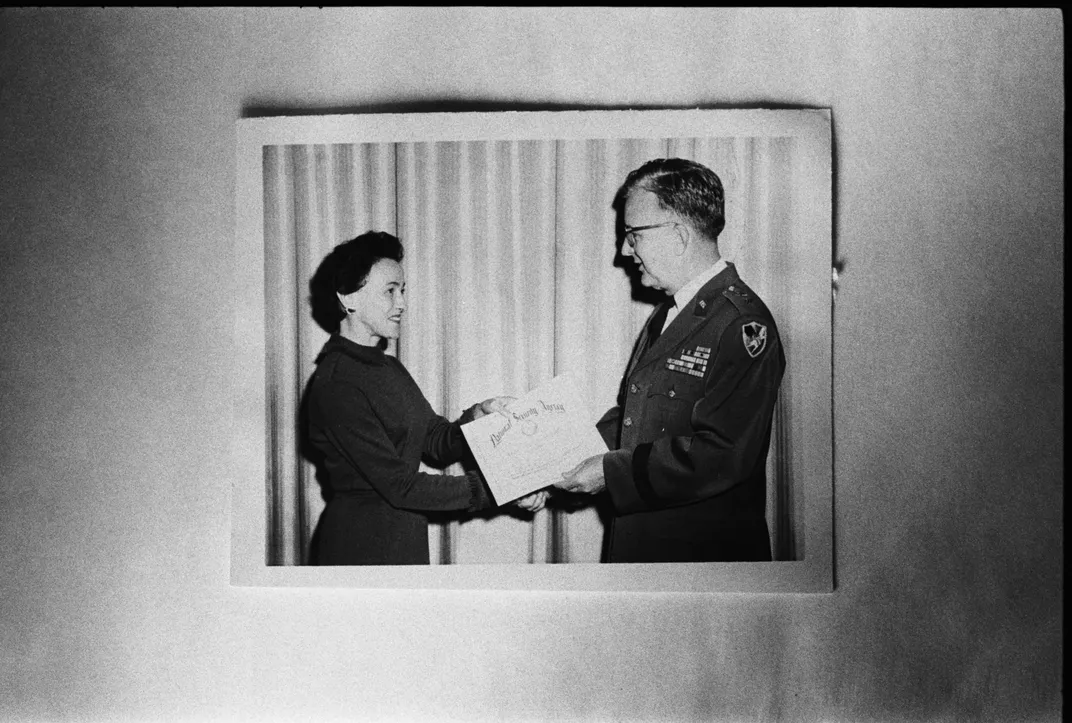
Not everyone was so congenial. A member of the Women’s Army Corps—one Lt. Hunter—initially tried to keep Nanni out of the unit because she lacked a degree. But after Nanni proved her mettle—it didn’t take long—she encountered Lt. Hunter in the ladies’ room. “I owe you an apology,” the officer said as they were washing their hands.
“Apology accepted,” Nanni said, meaning it, and walked out.
She started sorting traffic but then was assigned to locate messages that had involved the reuse of a one-time pad. She would feed certain messages into the key punch machines and hunt for repetitions. Whenever she found one, the entire unit jumped: “If you would find a match, you know what I mean, everything would just hustle-bustle.”
By 1946, the team had laid the groundwork so that Gardner, a linguist who had taught at the University of Akron, could look at code groups to divine what they meant. This was called book-breaking, and Gardner was a master. He not only broke words; he broke the “spell tables” used for encoding English letters. Soon enough he found himself reading a message from 1944 that identified prominent atomic scientists, including several with the Manhattan Project, who were passing secrets. He read dozens of messages sent between Moscow and New York in 1944 and 1945.
Thanks to the spell table, cover names emerged—dozens, even hundreds of aliases used to identify spies as well as public figures and projects. Gardner found that Franklin Roosevelt was KAPITAN. The U.S. War Department was ARSENAL, the State Department THE BANK. The Manhattan Project was ENORMOZ. Elizabeth Bentley was GOOD GIRL.
In September 1947, Clarke’s military intelligence unit quietly shared these successes with the FBI; Gardner began a richly productive liaison with FBI agent Robert Lamphere, who used the Venona material for his investigation, then reciprocated by providing information that sent the Venona team back to read old code groups in the light of new findings.
The results were startling. For example: An agent was mentioned in the dispatches first by the code name ANTENNA, then, beginning in September 1944, by LIBERAL. In June 1950, the FBI discerned that information about this agent matched known facts about New York engineer Julius Rosenberg. His wife, Ethel, was implicated in two of the messages. Other translations corroborated what Bentley and Chambers had said. In June 1950, the FBI determined that ALES was State Department aide Alger Hiss, then serving a sentence for perjury. JURIST was Harry Dexter White, who had died two years earlier.
Prosecutions were difficult—the cryptanalytic breakthroughs were so sensitive, they were withheld as evidence. But sometimes the FBI could produce corroborating information to disguise where the data had originated. This set the pattern for two years of investigations and prosecutions.
Even as Sen. Joseph McCarthy was smearing many innocent Americans, some of the charges he made were true. Likewise, President Truman played down some allegations that were, in fact, on the mark. (There is no definitive evidence that he was ever told about Venona; counterintelligence officials worried that there were spies in the White House.) While the nation erupted in finger-pointing and denials, the women in the back rooms of the Venona project knew what was what and who was who. Whenever a cover name was identified or a major spy operation uncovered, “we would all be happy about it and everything,” Angie Nanni recalls. But: “It was all in a day’s work.”
Her nonchalance is remarkable. The work was enormously stressful—potentially world-changing and crushingly tedious. Many code breakers suffered breakdowns. Gardner became an alcoholic. Not so the Venona women. “Once I walked out of those gates, I would forget about Arlington Hall,” Nanni says. “That’s the only way I could do it. When we would go out and eat and everything, we never discussed work.”
The extent to which the Venona code breakers were quarantined stood out even in the top-secret environment of Arlington Hall and, later, the NSA building in Fort Meade. No one was permitted to enter the Russian unit except for those who worked there. And even that level of security wasn’t enough.
William Weisband, a native Russian speaker who had become a U.S. citizen, worked as a “linguistic adviser” to the unit. He had a tendency to look over his colleagues’ shoulders. “When I saw him coming, I would put things over anything” she was working on, Nanni says. “He stopped at my desk, and I said, ‘May I help you?’ He took off.”
Code Girls: The Untold Story of the American Women Code Breakers of World War II
Recruited by the U.S. Army and Navy from small towns and elite colleges, more than ten thousand women served as codebreakers during World War II.
Her suspicion was well founded: Weisband was, in fact, an NKVD agent. He was identified and suspended in 1950—but never prosecuted for espionage, to preserve what was left of Venona’s secrecy. He sold insurance until he died, in 1967.
But even once the Soviets knew that the Americans had cracked Venona, there was nothing they could do about the wartime messages the Americans already possessed. More names were identified over the next two decades as the FBI provided new leads and the women went back to old material. In 1953, the CIA was briefed and began to assist in counterintelligence, enabling more message-mining. The two decades between 1960 and 1980 produced hundreds of translations of messages sent in the early 1940s.
**********
The Venona women strove for secrecy at the office and anonymity on the town, but they did not make up a totally closed society. With most of them declining to marry and raise children, they basically adopted the children in their extended families, for whom they were figures of fascination—exotic creatures who lived in the big city and did mysterious work.
“I think Gene was just an independent person that didn’t want the responsibility of a marriage,” Grabeel’s sister-in-law, Eleanor Grabeel, told me not long after Gene died, in January 2015, at the age of 94. Gene dated men, and men tended to like her very much, but “I just don’t think she was interested in getting married.”
“She was awesome,” says her great-nephew Jonathan Horton. “I loved to go visit her,” which he did often when he was growing up. (He’s now a professor of biology at the University of North Carolina-Asheville.) “She and Carrie [Berry] were always traveling, always talking about where they had been.” Once, when she read aloud some Russian words on a souvenir medal, her family was shocked to realize that she knew the language. “We all had crazy theories about what she did,” Horton says.
Relatives tried to pump her for information. “We enjoyed doing that,” says Grabeel’s sister, Virginia Cole. “But she never told us anything.” Jonathan Horton and his father, Ed, tried to interview Gene in the 1990s, long after she had retired, after Venona had been declassified, and after she had received a major award from the NSA. But “she would not talk about it, as much as my dad and I tried to pry,” Horton says. In Pennsylvania and its environs, Angie Nanni is cherished by 20 doting nieces and nephews, for whom she has always been a surrogate mother, an important influence and inspiration. Her nephew Jim DeLuca moved to Washington for graduate school at George Washington University in part because Aunt Angie was there. Sometimes he would drive her to work in Maryland, to a big unmarked campus with armed guards. She would go through the gate and disappear into a dark building. “You probably thought I was going to jail,” she teases him now. It was, of course, the NSA. By then, he knew better than to ask.
Not that he and his siblings hadn’t tried. When he was a child, his father would slide him pepperoni sticks to induce him to quiz Aunt Angie about what she did. But she held fast—usually. “My aunt can definitely stop a conversation and change the subject when she wants,” says her niece Mary Ann DeLuca. Though in the waning days of the Obama administration, some cousins were discussing the efforts of the Rosenbergs’ sons to exonerate their mother, and somebody expressed sympathy for their cause. “Oh, honey, they can’t,” Aunt Angie said. “We had them, they were guilty,” and walked away.
Into the 1970s, certain key Soviet wartime agents remained unidentified; even then, only selected portions of nearly 3,000 messages had been read. Customer agencies—the CIA, the FBI and agencies in the U.K.—wanted the messages mined as long as they might yield something, but in 1978, the NSA evaluated the likelihood of any more matches and decided to phase out the program within two years.
The NSA was moving into the computer age. The Venona women were artisans but also relics, and many chose to retire. Gene Grabeel retired at 58, in 1978. “She didn’t think she would want to or be able to switch into another project,” says Ed Horton; plus, her mother was ailing and needed Gene’s care. In 1980, it was Angie Nanni and Mildred Hayes who, along with a colleague, Janice Cram, boxed up the familiar work sheets and folders stored them away.
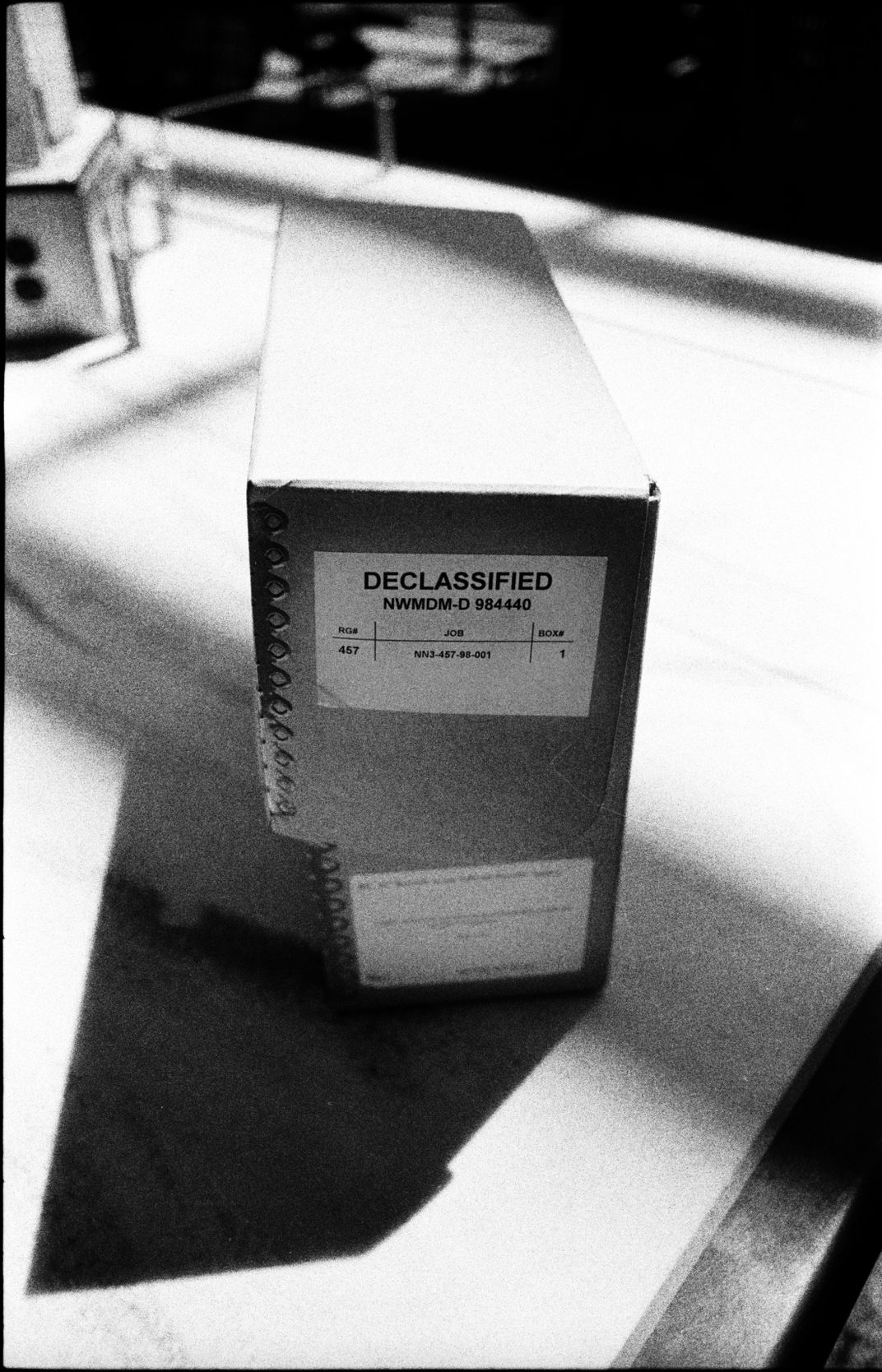
In 2001, six years after Venona was declassified, Jim DeLuca was online when something came into his news feed. He followed a link to a new NSA publication that recounted the project’s history and cited some of its key people. He was idly reading the names, Meredith Gardner and Gene Grabeel and the rest, when he saw: Angeline Nanni. Wait—what? Aunt Angie!? Venona?
He asked her about it. “Oh,” she said, “that was nothing.”
A Note to our Readers
Smithsonian magazine participates in affiliate link advertising programs. If you purchase an item through these links, we receive a commission.
